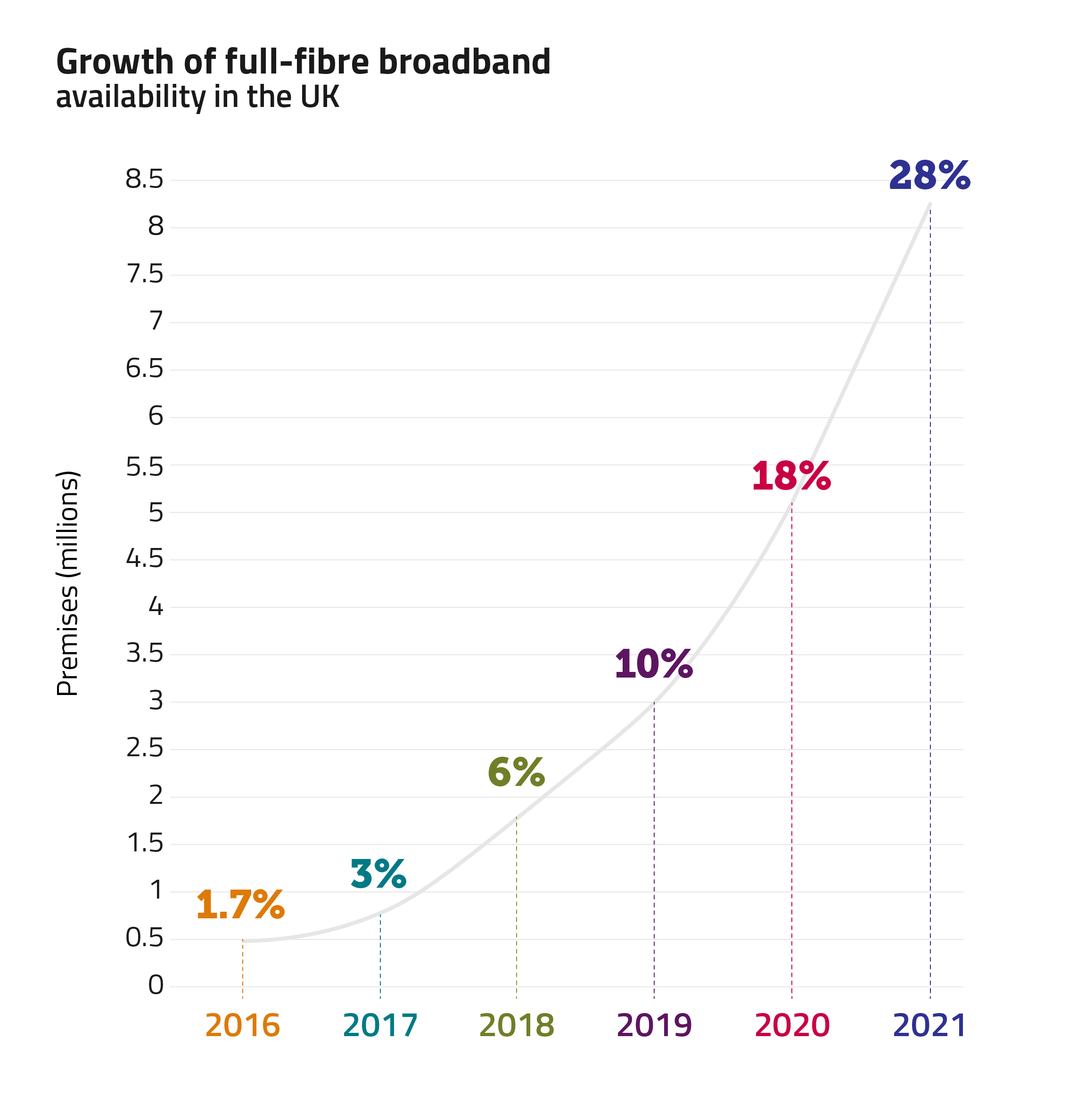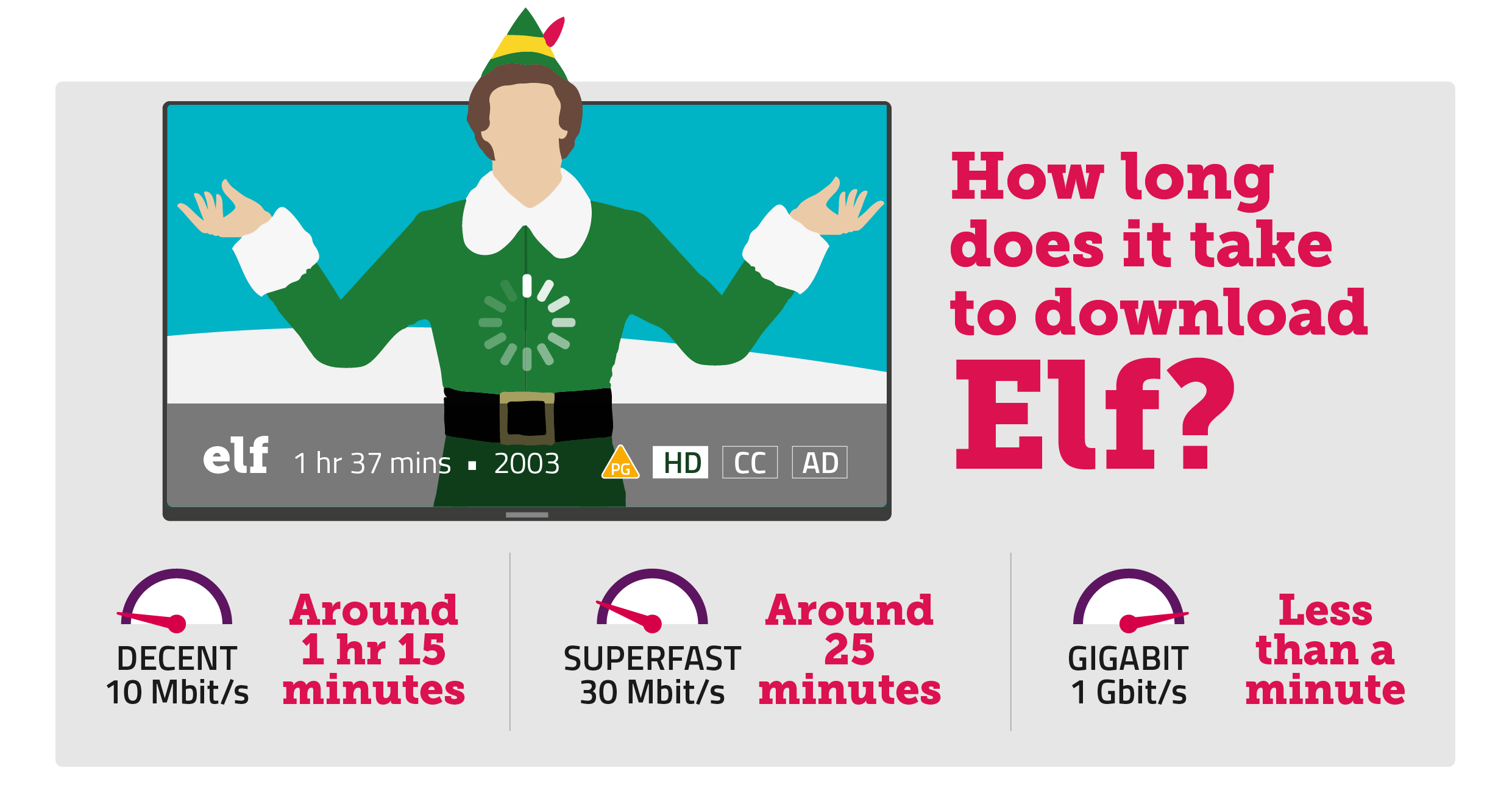Ffefrynnau ffilm Nadoligaidd mewn llai na munud-ffeibr llawn yn cyrraedd 8m o gartrefi
Mae'r cynnwys isod ar gael yn Saesneg. Gallwch ddarllen datganiad wasg Cymraeg am adroddiad Cysylltu'r Gwledydd Cymru yn y Ganolfan Newyddion.
- Full-fibre broadband now available to more than 8 million homes, as rollout accelerates
- Millions have already boosted their broadband, but many others yet to take advantage
- Decent broadband at highest-ever level, but more to do to reach remaining 123k homes
- Around half of the properties in the UK are now in an area with outdoor 5G coverage
Fast, reliable internet connections are now available to more people than ever before, allowing millions of families to download their favourite Christmas movie in less than a minute.
With many people across England, Scotland, Wales and Northern Ireland currently working from home, Ofcom’s annual Connected Nations reports on the availability of broadband and mobile services across the UK.

It reveals that the rollout of future-proof, full-fibre technology is accelerating at its fastest ever rate. More than 8 million homes (28%) can now get full-fibre broadband – an increase of 3 million properties in the last year.
In 2021, 750,000 homes upgraded to faster, more reliable full-fibre services, taking the number of properties connected to nearly two million. But these homes still represent less than a quarter (24%) of those to which full-fibre upgrades are available.
With 7.4 million broadband customers out of contract and likely to be paying higher prices for slower speeds, many households could upgrade to a discounted full fibre package without paying more than they currently do.
Why would I need full fibre?
Full-fibre connections – along with upgraded cable networks – can deliver download speeds of up to 1 Gbit/s[1], which could be particularly beneficial over the Christmas period when data use increases. At this speed, families with full-fibre services could download Christmas film favourite Elfin High-Definition in less than a minute, compared with around 25 minutes for those with superfast broadband (30 Mbit/s).

Full fibre can better support data-hungry households where family members need to stream, work, game, video-call and study online at the same time. In a year when many people continue to work from home due to the coronavirus pandemic, average monthly data use grew to 453 GB per connection – more than treble the level of five years ago (132 GB).
Connecting the hardest to reach
Around 123,000 homes (0.4% of the UK) still do not have access to a ‘decent’ broadband connection – defined as offering download speeds of 10 Mbit/s and upload speeds of 1 Mbit/s. At this speed, it could take up to an hour and a half to download an HD film.
The UK Government and governments in each of the UK nations continue to deliver projects aimed at making sure people in the hardest-to-reach areas can get the connections they need.
Since its launch in March 2020, orders have been placed under the Government’s universal broadband service that will result in around 6,500 households being connected to full-fibre broadband, and thousands more are expected to benefit from this scheme and others.
Many families now have multiple devices on the go at the same time for work, learning and entertainment – and the festive holidays can see a particular battle for bandwidth.
Full fibre is helping meet those demands, with millions more benefitting from faster speeds and more reliable connections. But some homes in hard-to-reach areas still struggle to get decent broadband, so there’s more work to do to make sure these communities get the connections they need.
Lindsey Fussell, Ofcom’s Network and Communications Group Director
5G coverage revealed
The rollout of 5G mobile continues to make swift progress, and for the first time we have published 5G coverage data.
We estimate that around half of UK properties are in areas where 5G is available outside from at least one mobile network operator. Take-up of 5G-enabled handsets has increased substantially, from just 800,000 last year to more than six million in 2021.
Although doubling in the last year, 5G traffic still accounts for a relatively small proportion of overall mobile data traffic at 3 per cent, with 4G remaining the dominant technology at 91 per cent.
Overall, mobile data consumption increased by 37% in the last year.
Notes to editors
- By September 2021, Gigabit-capable broadband was available to 13.7 million homes (47%). This includes full-fibre and upgraded cable networks that are capable of delivering download speeds of 1Gbit/s or higher. This figure has since further increased following Virgin Media O2 completing the upgrade of its network.
- We estimate that 5G is available from at least one mobile network operator in the vicinity of 42-57% of premises. The range is based on the information provided to us by operators and informed by our own measurement work.
- An interactive version of the report, also published today, allows people to look up how coverage compares in their area.
- The International Broadband Scorecard compared broadband availability and take-up across 17 different nations.
- Improving your wifi experience
- Estimated download speeds used in the Elf graphic are indicative





